George@DetailedImage
New member
Buffer Week from 8/8 - 8/13
For the next 6 day's, we'll be running the Porter Cable 7424, the Flex XC 3401 VRG and Metabo PE 12-175 on sale at our LOWEST PRICES!
The schedule for the Daily Specials is as follows:
8/8/08 - Porter Cable 7424
8/9/08 - Flex XC 3401 VRG
8/10/08 - Metabo PE 12-175
8/11/08 - Porter Cable 7424
8/12/08 - Flex XC 3401 VRG
8/13/08 - Metabo PE 12-175
We all know that a majority (90% or more) of results from detailing stem from properly prepping your paint, which includes washing & drying, using a clay bar, and most importantly, polishing your paint to remove as many imperfections as possible. Imperfections are essentially dips and valleys in your clear coat that does not allow light to pass through to the paint. Common imperfections in the paint are swirls, scratches, holograms, hazing, water spots, sap and bird dropping etchings. All of these can be treated by using a quality buffer along with the proper polish and pad combination. By polishing your paints surface, you'll be smoothing out your clear coat, allowing light to pass through to your paint offering the deepest and wettest reflection. In an idealistic world, the perfect detail would be one with 0 paint defects. Using a quality buffer correctly allows you to remove paint defects, making your clear coat as smooth and as even as it can be. Here's an example of what the Flex XC 3401 VRG can do on some neglected paint and the right polish / pad combos.
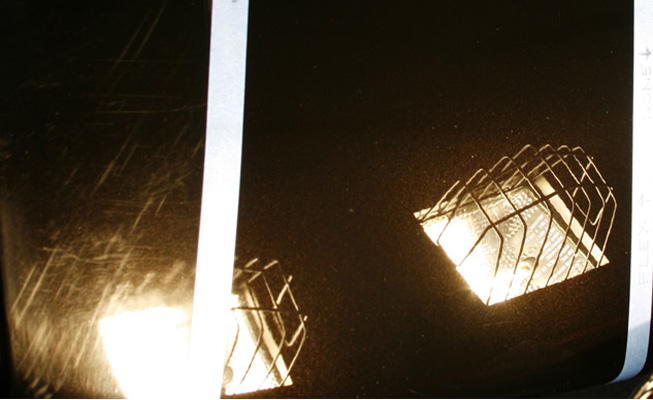
Comparing the 3 Buffers:
Porter Cable 7424
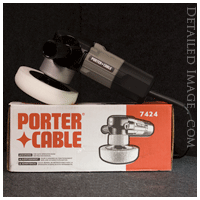
The Porter Cable 7424 quickly emerged as the goto buffer for auto detailing enthusiasts. It's biggest draw is how safe it is to use. By utilizing a random orbital motion, it is nearly impossible to damage your paint with some common sense. The downside of the PC7424 is that it can take a long time, lots of coats and passes, to correct severely neglected paint. The Porter Cable 7424 is lightweight and easy to use. It has a maximum speed of 6,000 oscillations per minute (OPM), which compared to a hand application, you can only imagine how much faster the PC is operating. Your results will escalate if you currently polishing by hand. This buffer is perfect for people just getting into polishing their vehicles.
Flex XC 3401 VRG
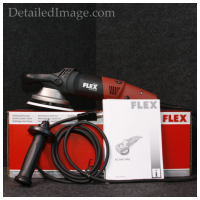
The Flex XC 3401 VRG changed the way serious enthusiasts tackled polishing their vehicles when it was introduced in the states roughly 1 year ago. This machine is a dual action machine, which means it oscillates as well as utilizes what's called forced rotation. This offers more correction abilities in less time when compared to traditional random orbital that just oscillates. This German built machine is a tank. With a motor twice the size of the Porter Cable (7.5A vs. 3.7A) and 60% more oscillations (9,600 OPM vs 6,000 OPM) this buffer can correct twice as many imperfections in half the time. Some other key features of this machine is the variable speed trigger, the ergonomic handle and hand positioning and the lightweight design. The Flex is the perfect upgrade for the Porter Cable 7424 and is perfect for the serious auto detailing enthusiast.
Metabo PE 12-175
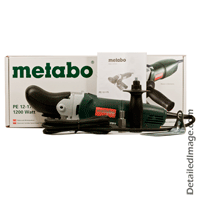
The Metabo PE 12-175 rotary buffer has quickly emerged as a favorite amongst professionals and serious enthusiasts. The Metabo rotary offers a low starting speed of 700 RPM, which gives the first time rotary users a safe starting speed. Rotary buffers have the highest potential for results, but also the largest risk of damaging the paint. When your shooting for perfection, this is the tool of choice!
Don't Forget Pads and Polishes
I always recommend matching the aggressiveness of the polish with the aggressiveness of the pad. Reason being, if you use too aggressive of a pad with a lighter polish (ie. PO106FF with an orange light cutting pad), you may be filling in light holograms or hazing and not realizing it. If you're seeing improvement with the current polish / pad combo, then you can jump to a more aggressive pad for faster results. If the results are minimal with a current polish / pad combo, I'll jump to the next level of polish / pad combo.
We recommend following these rules:
Also important to note, change your pad out for a new one after every few panels or at least clean it out. The more caked up the pad becomes, the harder it is to finish down as clean as the first panel when the pad is fresh. Excess product can lead to difficult product removal, not being able to break down the polish completely, and excessive dusting. I usually use about 4 pads per coat of polish, swapping them out roughly every 3 panels or so. On some paint I use even more.
Here are our Lake Country Pads in order of Most Aggressive to Least Aggressive:
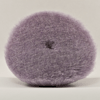
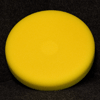
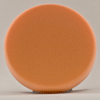
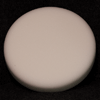
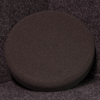
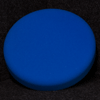
Here's a list of Menzerna's top polishes in order of Compound to Finishing Polish:
Thanks for reading! If anyone has any questions on anything, or needs a hand putting together a package to best fit your needs, please do not hesitate to ask.
George
For the next 6 day's, we'll be running the Porter Cable 7424, the Flex XC 3401 VRG and Metabo PE 12-175 on sale at our LOWEST PRICES!
The schedule for the Daily Specials is as follows:
8/8/08 - Porter Cable 7424
8/9/08 - Flex XC 3401 VRG
8/10/08 - Metabo PE 12-175
8/11/08 - Porter Cable 7424
8/12/08 - Flex XC 3401 VRG
8/13/08 - Metabo PE 12-175
We all know that a majority (90% or more) of results from detailing stem from properly prepping your paint, which includes washing & drying, using a clay bar, and most importantly, polishing your paint to remove as many imperfections as possible. Imperfections are essentially dips and valleys in your clear coat that does not allow light to pass through to the paint. Common imperfections in the paint are swirls, scratches, holograms, hazing, water spots, sap and bird dropping etchings. All of these can be treated by using a quality buffer along with the proper polish and pad combination. By polishing your paints surface, you'll be smoothing out your clear coat, allowing light to pass through to your paint offering the deepest and wettest reflection. In an idealistic world, the perfect detail would be one with 0 paint defects. Using a quality buffer correctly allows you to remove paint defects, making your clear coat as smooth and as even as it can be. Here's an example of what the Flex XC 3401 VRG can do on some neglected paint and the right polish / pad combos.

Comparing the 3 Buffers:
Porter Cable 7424

The Porter Cable 7424 quickly emerged as the goto buffer for auto detailing enthusiasts. It's biggest draw is how safe it is to use. By utilizing a random orbital motion, it is nearly impossible to damage your paint with some common sense. The downside of the PC7424 is that it can take a long time, lots of coats and passes, to correct severely neglected paint. The Porter Cable 7424 is lightweight and easy to use. It has a maximum speed of 6,000 oscillations per minute (OPM), which compared to a hand application, you can only imagine how much faster the PC is operating. Your results will escalate if you currently polishing by hand. This buffer is perfect for people just getting into polishing their vehicles.
Flex XC 3401 VRG

The Flex XC 3401 VRG changed the way serious enthusiasts tackled polishing their vehicles when it was introduced in the states roughly 1 year ago. This machine is a dual action machine, which means it oscillates as well as utilizes what's called forced rotation. This offers more correction abilities in less time when compared to traditional random orbital that just oscillates. This German built machine is a tank. With a motor twice the size of the Porter Cable (7.5A vs. 3.7A) and 60% more oscillations (9,600 OPM vs 6,000 OPM) this buffer can correct twice as many imperfections in half the time. Some other key features of this machine is the variable speed trigger, the ergonomic handle and hand positioning and the lightweight design. The Flex is the perfect upgrade for the Porter Cable 7424 and is perfect for the serious auto detailing enthusiast.
Metabo PE 12-175

The Metabo PE 12-175 rotary buffer has quickly emerged as a favorite amongst professionals and serious enthusiasts. The Metabo rotary offers a low starting speed of 700 RPM, which gives the first time rotary users a safe starting speed. Rotary buffers have the highest potential for results, but also the largest risk of damaging the paint. When your shooting for perfection, this is the tool of choice!
Don't Forget Pads and Polishes
I always recommend matching the aggressiveness of the polish with the aggressiveness of the pad. Reason being, if you use too aggressive of a pad with a lighter polish (ie. PO106FF with an orange light cutting pad), you may be filling in light holograms or hazing and not realizing it. If you're seeing improvement with the current polish / pad combo, then you can jump to a more aggressive pad for faster results. If the results are minimal with a current polish / pad combo, I'll jump to the next level of polish / pad combo.
We recommend following these rules:
- Compounds use purple foamed wool, yellow cutting pad, orange light cutting pad
- Medium cutting polishes stick to purple foamed wool (on rotary) or orange light cutting pads or white polishing pads (on DA / random orbitals)
- Finishing polishes stick to white polishing pads, black finishing pads or blue fine finishing pads.
Also important to note, change your pad out for a new one after every few panels or at least clean it out. The more caked up the pad becomes, the harder it is to finish down as clean as the first panel when the pad is fresh. Excess product can lead to difficult product removal, not being able to break down the polish completely, and excessive dusting. I usually use about 4 pads per coat of polish, swapping them out roughly every 3 panels or so. On some paint I use even more.
Here are our Lake Country Pads in order of Most Aggressive to Least Aggressive:






Here's a list of Menzerna's top polishes in order of Compound to Finishing Polish:
Thanks for reading! If anyone has any questions on anything, or needs a hand putting together a package to best fit your needs, please do not hesitate to ask.
George
